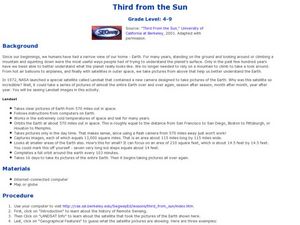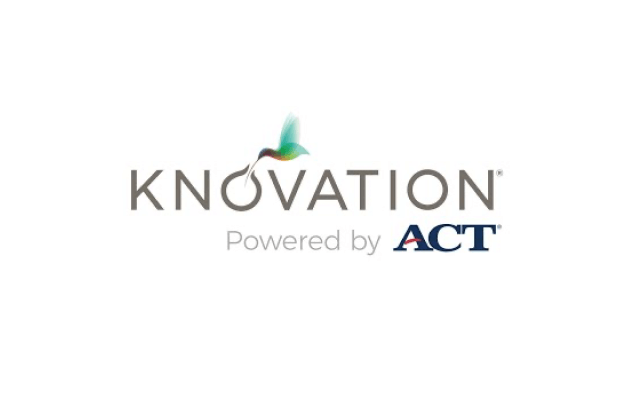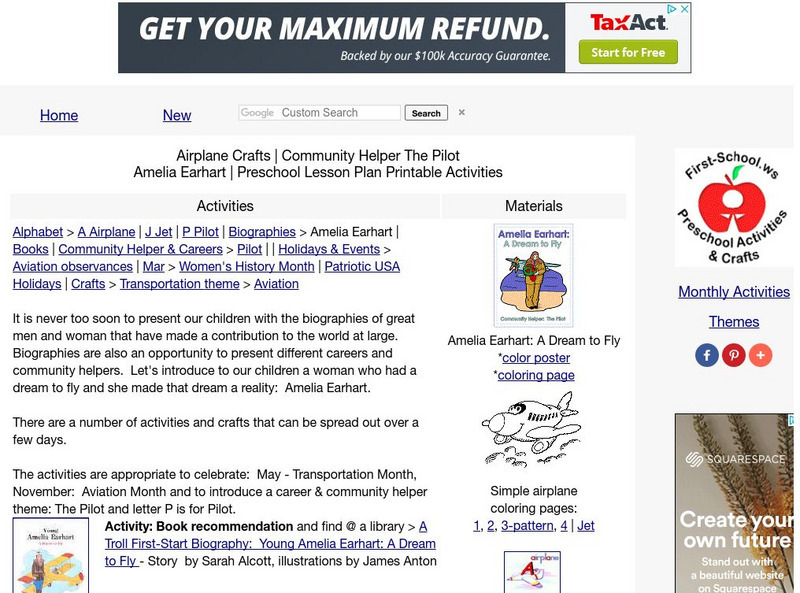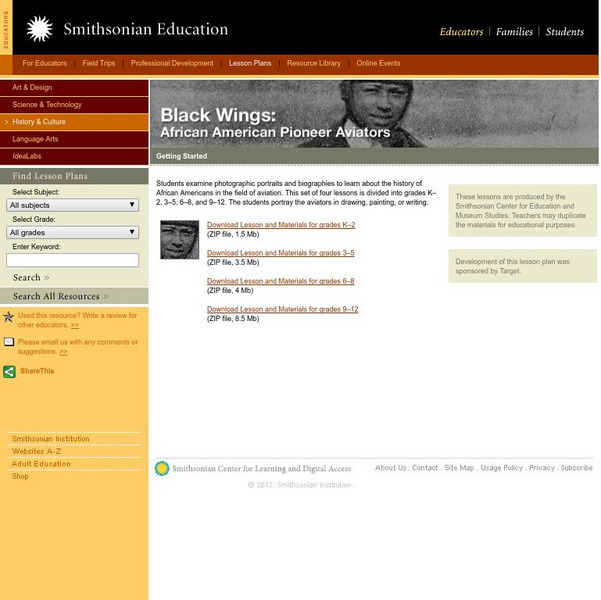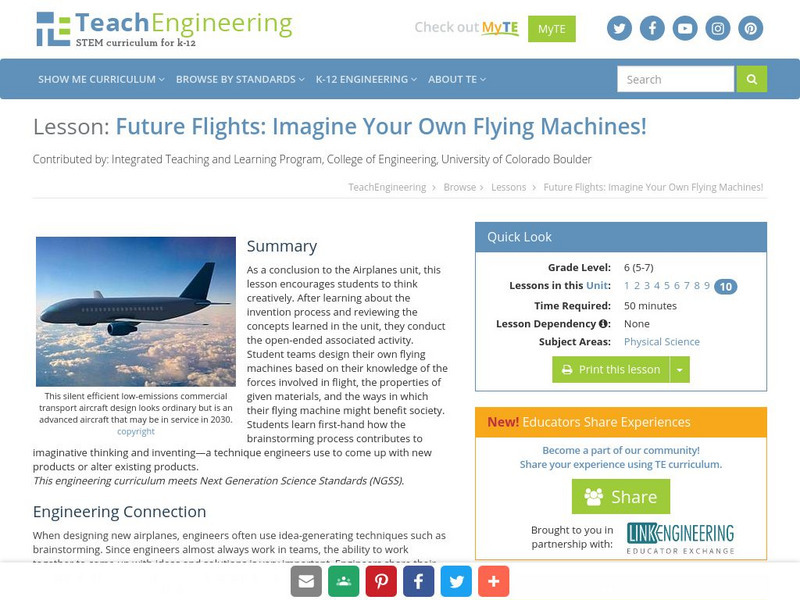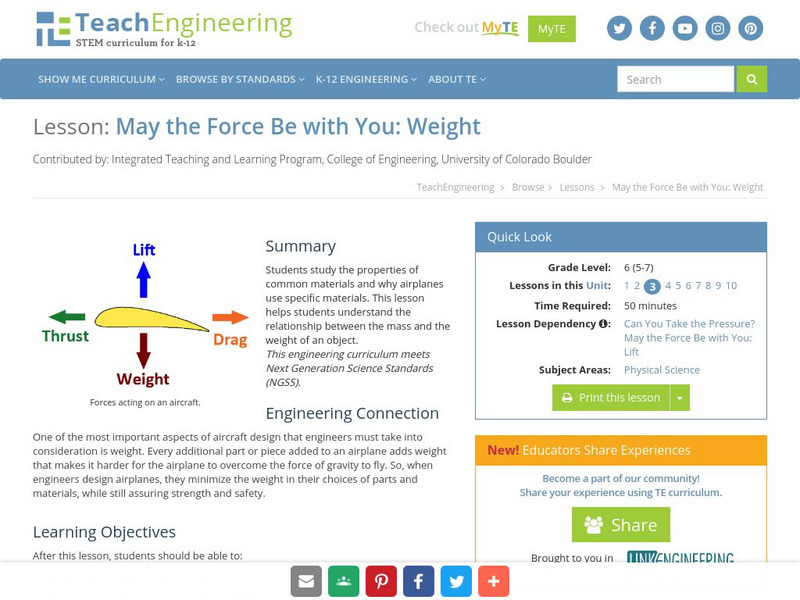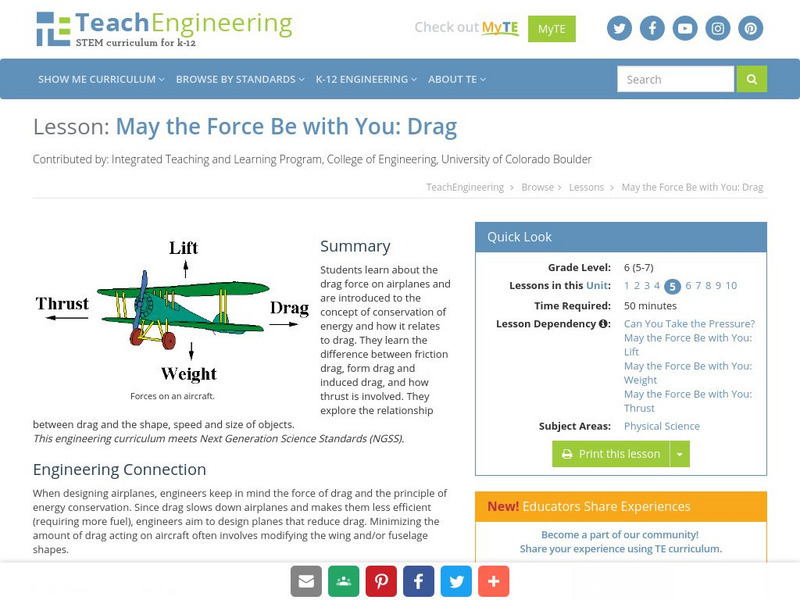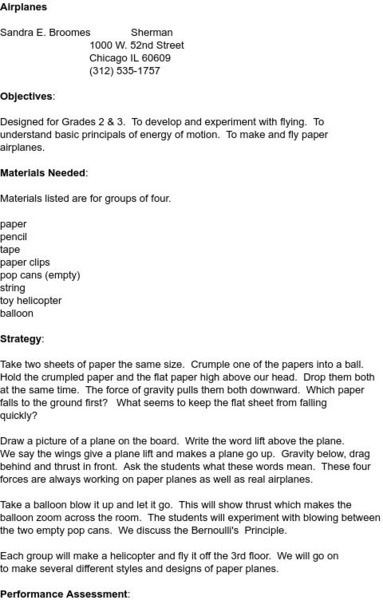Curated OER
Foods and Languages of the World
Students create their own ice cream sundae given various toppings from around the world. In this foods and languages of the world diversity lesson plan, students develop an understanding of diversity in culture, family structure, ability...
Curated OER
MOBILITY, Traveling Lightly: What’s My Footprint?
Students calculate their carbon footprint. In this environmental technology lesson, students listen to a lecture on climate change. Students brainstorm solutions to reduce environmental impact based on travel options. Students calculate...
Curated OER
Third from the Sun
Students examine images from space. In this third from the Sun lesson, students examine images from, Landsat, the satellite launched by NASA in 1972.
Curated OER
Late-In-The-Year Counting
Students practice forward and backward counting. In this counting lesson, students calculate how many objects in a bag by counting forward and then count backward to check.
Curated OER
Catch as Catch Can
Students investigate insects. In this insect analysis instructional activity, students catch insects using nets they make. They identify the insects they catch and create a chart to show the numbers and varieties. This instructional...
Smithsonian Institution
Smithsonian Learning Lab: Airplanes and Airports: How to Take Off Without Ever Leaving the Ground
Smithsonian Education presents "Airplanes and Airports: How to Take Off Without Ever Leaving the Ground." Teachers can download this teaching package that discusses airplanes and airports. Included in the discussion are the forces of...
TeachEngineering
Teach Engineering: Take Off With Paper Airplanes
This lesson plan introduces young scholars to the art of designing an airplane through paper airplane constructions. The goal is that students will learn important aircraft design considerations and how engineers must iterate their...
Science Education Resource Center at Carleton College
Serc: Designing Fast and Slow Airplanes and Measuring Velocity
In this activity, students design their own airplanes and fly them. The challenge is to create a fast plane and a slow plane and compare the speed to the design.
Science Education Resource Center at Carleton College
Serc: Investigating Flight With Paper Airplanes
Students will experiment with different styles of paper airplanes, create questions to test, and design experiments that will allow them to gather data related to their question. They will record their data, using graphs where...
Other
Lesson Plan Activities: Amelia Earhart and Airplanes
This site features several lesson plan ideas and activities on Amelia Earhart and airplanes for young learners.
TeachEngineering
Teach Engineering: Land! Water! Sky! Oh My!
This lesson focuses on the importance of airplanes in today's society. Airplanes of all shapes and sizes are used for hundreds of different reasons, including recreation, commercial business, public transportation, and delivery of goods,...
Science Buddies
Science Buddies: Defining an Engineering Design Problem With Paper Airplanes
In this fun instructional activity, you will be the "customer" ordering a paper airplane, and your student teams will be engineering companies that will manufacture planes. Before they start making planes, they need to define the...
Smithsonian Institution
Smithsonian Education: Lesson Plan: Black Wings: American Pioneer Aviators
With this resource, teachers can select the most appropriate academic level and download a lesson plan that contains images, Word documents and PDF resources for teaching about the history of black Americans in aviation. Excellent...
PBS
Pbs Teachers: Supersonic Dream
Examine how fuel use affects the mass of different planes during flight. This lesson teaches students how to determine the per person fuel cost of a transatlantic flight for seven airplanes, and display the results on a bar graph. Three...
Smithsonian Institution
Smithsonian Learning Lab: How Things Fly: Activities for Teaching Flight
Through this series of three lessons, students will gain an understanding of the basics of flight. They will learn about the four forces of flight and practice their observation skills through a number of fun experiments. In addition,...
TeachEngineering
Teach Engineering: Future Flights!
This lesson plan is an exciting conclusion to the airplanes unit that encourages learners to think creatively. After a review of the concepts learned, students will design their own flying machine based on their knowledge of the forces...
TeachEngineering
Teach Engineering: May the Force Be With You: Lift
Students revisit Bernoulli's Principle (Lesson 1 of the Airplanes unit) and learn how engineers use this principle to design airplane wings. Airplane wings create lift by changing the pressure of the air around it. This is the first of...
TeachEngineering
Teach Engineering: May the Force Be With You: Weight
The purpose of this lesson is to help students understand the relationship between the mass and the weight of an object. Students will study the properties of common materials and why airplanes use specific materials.
TeachEngineering
Teach Engineering: May the Force Be With You: Drag
This lesson explores the drag force on airplanes. The students will be introduced to the concept of conservation of energy and how it relates to drag. Students will explore the relationship between drag and the shape, speed and size of...
Science and Mathematics Initiative for Learning Enhancement (SMILE)
Smile: Lab Activity: Aviation
This site from the Illinois Institute of Technology provides a student lab activity in which the flight of a paper airplane is investigated and studied. Designed for primary grades, but easily adaptable for junior high students.
TeachEngineering
Teach Engineering: What Makes Airplanes Fly?
Students begin to explore the idea of a force. To further their understanding of drag, gravity and weight, they conduct activities that model the behavior of parachutes and helicopters. An associated literacy activity engages the class...
TeachEngineering
Teach Engineering: What Is Newton's Third Law?
Students are introduced to Newton's third law of motion, and then learn that engineers apply Newton's third law and an understanding of reaction forces when designing a wide range of creations, from rockets and aircraft to door knobs,...
Other
Ontario Council for Technology Education: Transportation Design and Construction [Pdf]
In this project, young scholars will develop knowledge and skills related to the construction of vehicle/craft systems. They will identify and describe the major systems and components of vehicles, aircraft, and/or watercraft such as...
Science and Mathematics Initiative for Learning Enhancement (SMILE)
Smile: Airplanes (2 3)
This paper airplane lesson plan helps students learn about certain concepts like air resistance, motion, and aerodynamics.
Other popular searches
- Aviation and Aerospace
- Aviation History
- Aviation Topics
- Aviation Powerpoint
- Applied Math for Aviation
- Careers in Aviation
- Aviation Lesson Plans
- History of Aviation
- Flight, Aviation
- Aviation Classroom Projects
- Aviation Industry
- Aviation Pioneers




